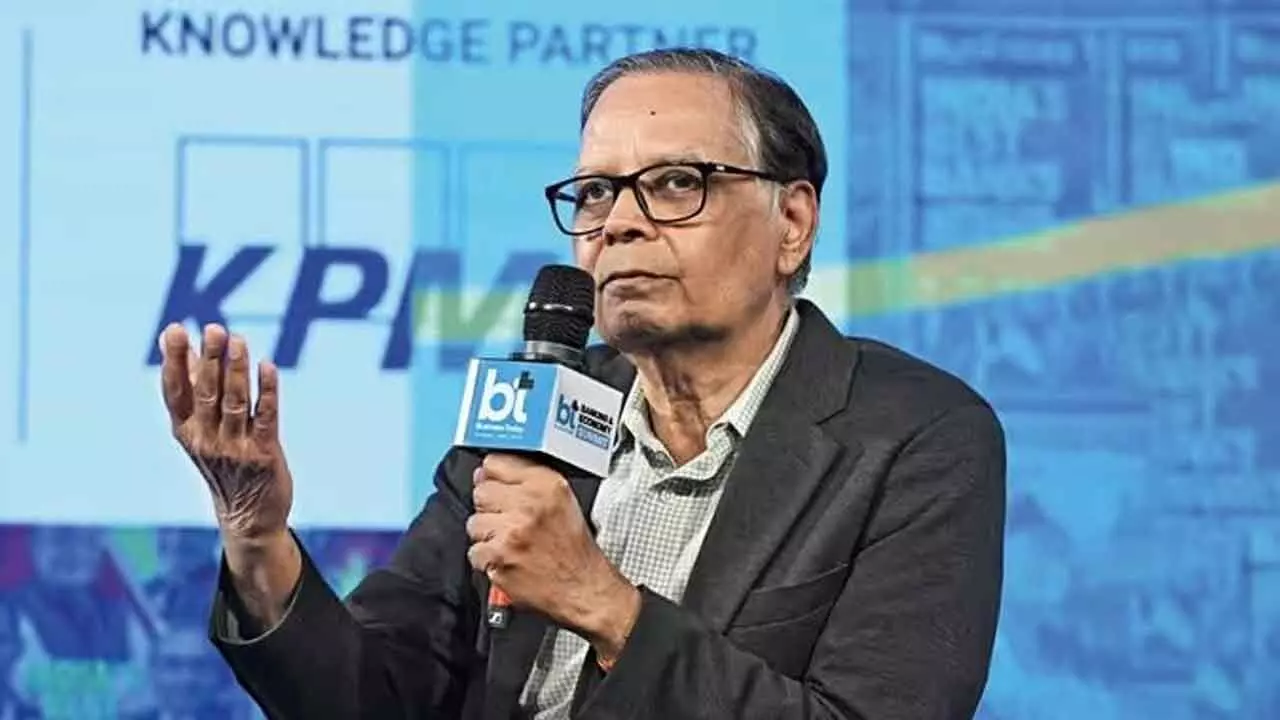India can be a $50 trillion economy by 2047: Experts
India has been growing at 10 per cent annually in current dollar terms
Arvind Panagariya, chairman of the 16th Finance Commission

The enthusiasm for India’s growth prospects is palpable given the slowing global growth buffeted by recent headwinds of unprecedentedly high levels of global debt to GDP, inflation, decelerating global population growth and plateauing global trade to GDP
India has the potential to become a $50 trillion economy by 2047 if the country makes the most of its young demography, favourable geopolitical conditions and improves its per capita income in the coming decades, opined Arvind Panagariya, chairman of the 16th Finance Commission.
As per EY projections, India’s GDP will be $26 trillion in market exchange rate terms by 2047-48. Looking over the next few decades, the country presents a major growth opportunity.
India@100: Realizing the potential of a $26 trillion economy details the path ahead, from demographics to domestic consumption to reform. India is most likely to overtake Germany and Japan to emerge as the third largest economy after China and the US by 2030. In 25 years, at a size of $26 trillion, our per capita GDP would be over $15,000, six times its current level, said N. Chandrasekaran, executive chairman, Tata Sons in a Foreword of a presentation by EY INDIA@100: Realizing the potential of a $26 trillion economy.
This report demonstrates that even while maintaining a stable yet modest growth rate averaging about six per cent per annum, India would become a $26 trillion economy (in market exchange rate terms) by 2047-48 (in nominal terms), with a per capita income exceeding $15,000 (nearly six times the current value).
India has grown about 10 per cent annually in current dollar terms over the past few years and maintaining the trajectory would make the South Asian country a $32 trillion economy by 2047, Panagariya said at Business Today's India@100 Economy Summit 2023 in New Delhi.
"But I believe we can aim higher," Panagariya added.
He said India's per capita income is low, and there's a lot of room to catch up with the advanced economies. At the same time, other factors like geopolitics and demography are favourable for pushing the nation towards becoming a bigger economy.
India's per capita income, which stood at Rs 2.12 lakh in 2023-24, is projected to reach Rs 14.9 lakh by 2047, according to a presentation by the chief economic advisor V. Anantha Nageswaran at a press conference after the tabling of the Economic Survey for 2023-24 in July.
India’s per capita income would exceed $15,000, by 2047-48, putting it among the ranks of developed economies.
India's economic growth better than expectations, stated IMF's Gita Gopinath
The enthusiasm for India’s growth prospects is palpable given the slowing global growth buffeted by recent headwinds of unprecedentedly high levels of global debt to GDP, inflation, decelerating global population growth and plateauing global trade to GDP.
These trends have been further exacerbated by rising protectionism amidst rising geopolitical tensions. India has attained critical mass as the fifth largest economy in the world, realized primarily on account of its policies of economic liberalization, which made it more market-oriented, allowed for a greater role for private capital and in the process increased its global competitiveness. The growth projections are the highest for any large economy over the coming decades.
Panagariya also said that liberalizing the economy further can help the country realize its trade potential.
“We are an open economy... But, in terms of the trade policy, there is a lot of scope to liberalize further. Many tariffs are high, which need to be brought down,” he said.
Panagariya said the West's ‘China Plus One’ policy, a business strategy adopted by western nations to encourage companies to diversify their manufacturing and supply chains by investing in countries other than China, puts India in a great position to push its growth rate further.
The policy's goal is to reduce reliance on China and mitigate risks associated with geopolitical tensions and supply-chain disruptions.
Moreover, he said, India should make way for more labour-intensive industries to tap the potential of its workforce.
“There's a lot of hope that the new labour codes enacted in 2019-20 will now be implemented, which will go a long way in clearing the obstacles to the emergence and expansion of these labour-intensive sectors. We also need quite a bit of work in land, as urban land in India is expensive,” he maintained.
He said India will need more reforms to escape the middle-income trap. It will need to remain an open market economy that competes with the best in the world.
He added that states must step up reforms to help pull up the country's economy in the coming years.
The middle-income trap is when a country reaches a middle level of income per capita but doesn't develop further and can't become a high-income country.

